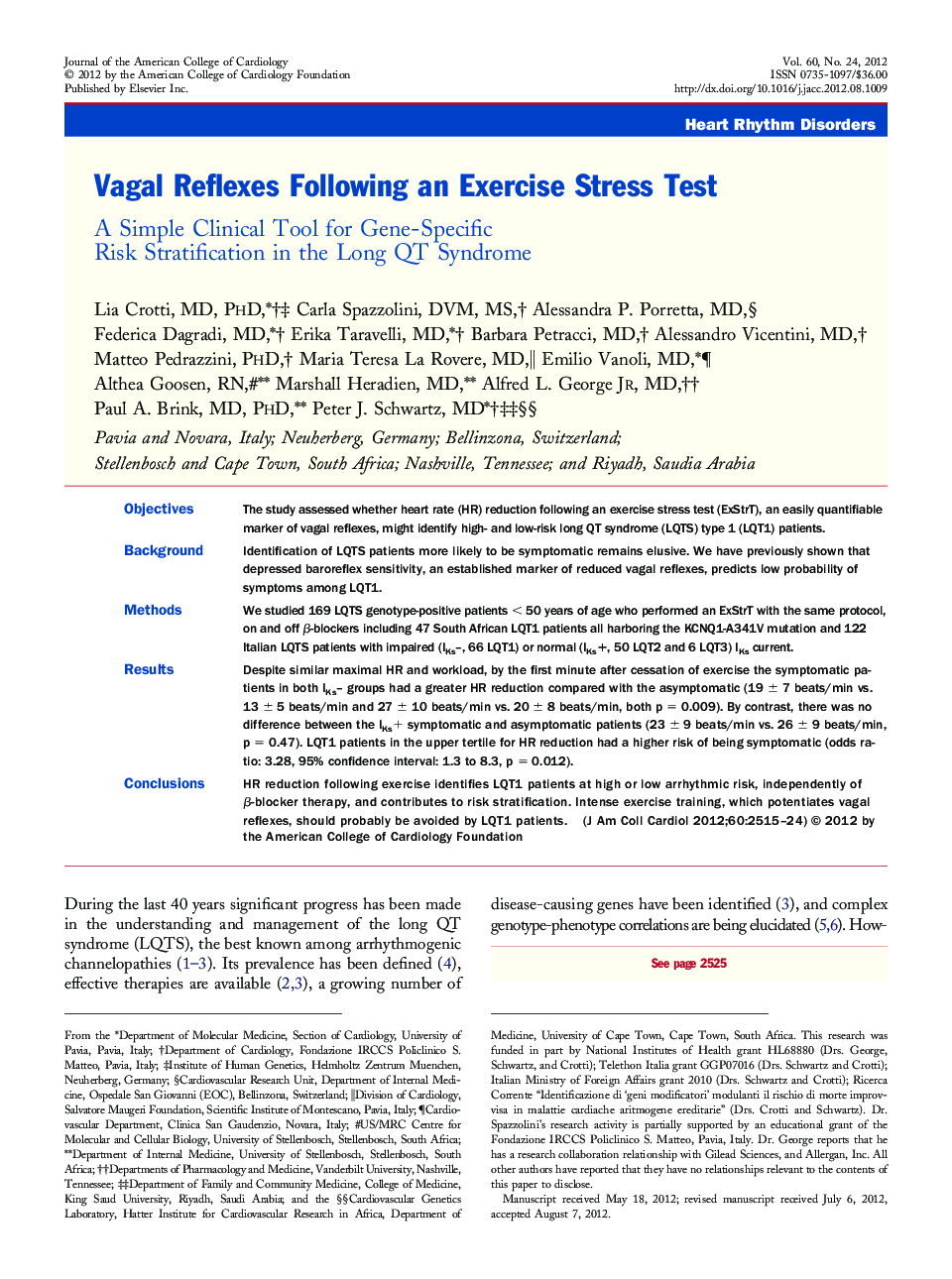| کد مقاله | کد نشریه | سال انتشار | مقاله انگلیسی | نسخه تمام متن |
|---|---|---|---|---|
| 2946175 | 1577181 | 2012 | 10 صفحه PDF | دانلود رایگان |

ObjectivesThe study assessed whether heart rate (HR) reduction following an exercise stress test (ExStrT), an easily quantifiable marker of vagal reflexes, might identify high- and low-risk long QT syndrome (LQTS) type 1 (LQT1) patients.BackgroundIdentification of LQTS patients more likely to be symptomatic remains elusive. We have previously shown that depressed baroreflex sensitivity, an established marker of reduced vagal reflexes, predicts low probability of symptoms among LQT1.MethodsWe studied 169 LQTS genotype-positive patients < 50 years of age who performed an ExStrT with the same protocol, on and off β-blockers including 47 South African LQT1 patients all harboring the KCNQ1-A341V mutation and 122 Italian LQTS patients with impaired (IKs–, 66 LQT1) or normal (IKs+, 50 LQT2 and 6 LQT3) IKs current.ResultsDespite similar maximal HR and workload, by the first minute after cessation of exercise the symptomatic patients in both IKs– groups had a greater HR reduction compared with the asymptomatic (19 ± 7 beats/min vs. 13 ± 5 beats/min and 27 ± 10 beats/min vs. 20 ± 8 beats/min, both p = 0.009). By contrast, there was no difference between the IKs+ symptomatic and asymptomatic patients (23 ± 9 beats/min vs. 26 ± 9 beats/min, p = 0.47). LQT1 patients in the upper tertile for HR reduction had a higher risk of being symptomatic (odds ratio: 3.28, 95% confidence interval: 1.3 to 8.3, p = 0.012).ConclusionsHR reduction following exercise identifies LQT1 patients at high or low arrhythmic risk, independently of β-blocker therapy, and contributes to risk stratification. Intense exercise training, which potentiates vagal reflexes, should probably be avoided by LQT1 patients.
Journal: Journal of the American College of Cardiology - Volume 60, Issue 24, 18 December 2012, Pages 2515–2524